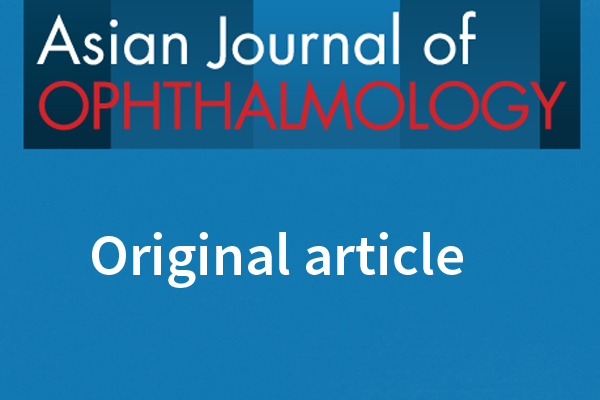Intercellular adhesive molecule-1 (ICAM-1) in proliferative diabetic retinopathy
Abstract
Purpose: To determine the level of intercellular adhesion molecule-1 (ICAM-1) in vitreous fluid of patients with proliferative diabetic retinopathy (PDR) and its affecting factors including HbA1c level, duration of diabetes mellitus (DM) and insulin usage.
Methods: A cross-sectional study was conducted in Cipto Mangunkusumo National General Central Hospital, Jakarta, Indonesia from June 2015 to August 2016. Thirty-three consecutive vitreous samples harvested from PDR patients underwent vitrectomy. The level of vitreous ICAM-1 was determined by enzyme-linked immunosorbent assay.
Results: Based on the glycemic status, vitreous ICAM-1 level in the uncontrolled glycemic group (21.61 ng/ml) was lower than controlled glycemic group (24.20 ng/ml). Patients with DM for more than 10 years had higher level of vitreous ICAM-1 (26.30 ng/ml). Vitreous ICAM-1 level in DM patients with insulin was higher than those without insulin (27.07 ng/ml vs. 24.17 ng/ml). There was no statistically significant difference between vitreous ICAM-1 levels among all groups (p > 0.05).
Conclusion: The concentration of vitreous ICAM-1 may not be influenced by glucose control and conventional insulin therapy.
References
Silva PAS, Cavallerano JD, Sun JK, et al. Proliferative diabetic retinopathy. In: Ryan SJ, et al. Retina. 5th ed. Philadelphia: Elsevier; 2013:1020-1048. https://clinicalgate.com/proliferative-diabetic-retinopathy-2/
Flethcer EC, Chong NV. Retina. In: Riordan-Eva P, Whither JP (Eds) Vaughan & Asbury’s General Ophthalmology. 17th ed. London: McGraw Hill; 2007. chapter 10.
Fauci AS, Kasper DL, Longo DL, et al. Diabetes mellitus. In: Fauci AS, Kasper DL, Longo DL, Braunwald E, Hauser SL, Jameson Jl, et al. Harrison’s Principles of Internal Medicine. 17th ed. USA: The McGraw-Hill; 2008. chapter 338.
Vitreoretinal Division, Department of Ophthalmology, Faculty of Medicine, University of Indonesia. Prevalence of diabetic retinopathy. Unpublished raw data; 2013.
Limb GA, Webster L, Soomro H, Janikoun S, Shiling J. Platelet expression of tumour necrosis factor-alpha (TNF-a), TNF receptors and intercellular adhesion molecule-1 (ICAM-1) in patients with proliferative diabetic retinopathy. Clin Exp Immunol. 1999;118:213-218. https://www.ncbi.nlm.nih.gov/pubmed/10540181
Mroczek JA, Mlynczak JPO, Hojlo MM. Proliferative diabetic retinopathy—the influence of diabetes control on the activation of the intraocular molecule system. Diabetes Res Clin Pract. 2009;84:46-50. doi: 10.1016/j.diabres.2009.01.012
Zhang K, Ferreyra HA, Grob S, Bedell M, Zhang JJ. Diabetic retinopathy: genetics and etiologic mechanisms. In: Ryan SJ, et al. (Eds), Retina. 5th ed. Philadelphia: Elsevier; 2013:975-985. https://clinicalgate.com/diabetic-retinopathy-genetics-and-etiologic-mechanisms/
Mroczek JA, Mlynczak JO. Assessment of selected adhesion molecule and proinflammatory cytokine levels in the vitreous body of patients with type 2-diabetes role of the inflammatory immune process in the pathogenesis of proliferative diabetic retinopathy. Graefes Arch Clin Exp Ophthalmol. 2008;246:1665-1670. DOI: 10.1007/s00417-008-0868-6
Ghonaim MM, El-Edel RH. Circulating cell adhesion molecules (sICAM-1 and sVCAM-1) and microangiopathy in diabetes mellitus. Ibnosina J Med BS. 2015;7(6):211-218. http://journals.sfu.ca/ijmbs/index.php/ijmbs/article/view/522/1085
Joussen AM, Poulaki V, Le ML, et al. A central role for inflammation in the pathogenesis of diabetic retinopathy. FASEB J. 2004;18:1450-1452. doi: 10.1096/ij.03-1476fje
Yan Y, Zhu L, Hong L, Deng J, Song Y, Chen X. The impact of ranibizumab on the level of intercellular adhesion molecule type 1 in the vitreous of eyes with proliferative diabetic retinopathy. Acta Ophthalmol. 2016;94:358-364. DOI: 10.1111/aos.12806
El-Asrar AMA, Nawaz MI, Kangave D, et al. High-mobility group box-1 and biomarkers of inflammation in the vitreous from patients with proliferative diabetic retinopathy. Mol Vis. 2011;17:1829-1838. https://www.ncbi.nlm.nih.gov/pubmed/21850157
Ruszkowska-Ciastek B, Sokup A, Wernik T, et al. Effect of uncontrolled hyperglycemia on levels of adhesion molecules in patients with diabetes mellitus type 2. J Zhejiang Univ Sci B. 2015;16(5):355-361. doi: 10.1631/jzus.B1400218
Noda K, Nakao S, Zandi S, Sun D, Hayes KC, Hafezi-Moghadam A. Retinopathy in a novel model of metabolic syndrome and type 2 diabetes: new insight on the inflammatory paradigm. FASEB J. 2014;28(5):2038-2046. doi: 10.1096/fj.12-215715
Huang G, Gandhi JK, Zhong X, et al. TNF-a is required for late BRB breakdown in diabetic retinopathy, and its inhibition prevents leukostasis and protects vessels and neurons from apoptosis. 2011 Mar 10;52(3):1336-44. doi: 10.1167/iovs.10-5768. Print 2011 Mar.
Nagineni CN, Kutty RK, Detrick B, Hooks JJ. Inflammatory cytokine induce intercellular adhesion molecule-1 (ICAM-1) mRNA synthesis and protein secretion by human retinal pigment epithelial cell cultures. Cytokine. 1996 Aug; 8(8):622-630.
Qaum T, Xu Q, Joussen AM, et al. VEGF-initiated blood retinal barrier breakdown in early diabetes. Retina. 2001 Sept; 42(10):2408-2413.
King GL, Buzney SM, Kahn CR, et al. Differential responsiveness to insulin of endothelial and support cells from micro- and macrovessels. J Clin Invest. 1983;71:974-979. https://www.ncbi.nlm.nih.gov/pubmed/6339562
Jingi AM, Noubiap JJ, Essouma M, et al. Association of insulin treatment versus oral hypoglycemic agents with diabetic retinopathy and its severity in type 2 diabetes patients in Cameroon, sub-Saharan Africa. Ann Transl Med. 2016 Oct;4(20):395. DOI: 10.21037/atm.2016.08.42
Hirata F, Yoshida M, Niwa Y, et al. Insulin enhances leukocyte endothelial cell adhesion in the retinal microcirculation through surface expression of intercellular adhesion molecule-1. Microvasc Res. 2005;69:135-141. doi: 10.1016/j.mvr.2005.03.002

Copyright (c) 2020 Andi Arus Victor, Tjahjono D. Gondhowiardjo, Rahayuningsih Dharma, Sri W. A. Jusman, Vivi R. Yandri, Ressa Yuneta, Rizky E. P. Yuriza

This work is licensed under a Creative Commons Attribution 4.0 International License.
Authors who publish with this journal agree to the following terms:
- Authors retain copyright and grant the journal right of first publication, with the work twelve (12) months after publication simultaneously licensed under a Creative Commons Attribution License that allows others to share the work with an acknowledgement of the work's authorship and initial publication in this journal.
- Authors are able to enter into separate, additional contractual arrangements for the non-exclusive distribution of the journal's published version of the work (e.g., post it to an institutional repository or publish it in a book), with an acknowledgement of its initial publication in this journal.
- Authors are permitted and encouraged to post their work online (e.g., in institutional repositories or on their website) prior to and during the submission process, as it can lead to productive exchanges, as well as earlier and greater citation of published work (See The Effect of Open Access).


